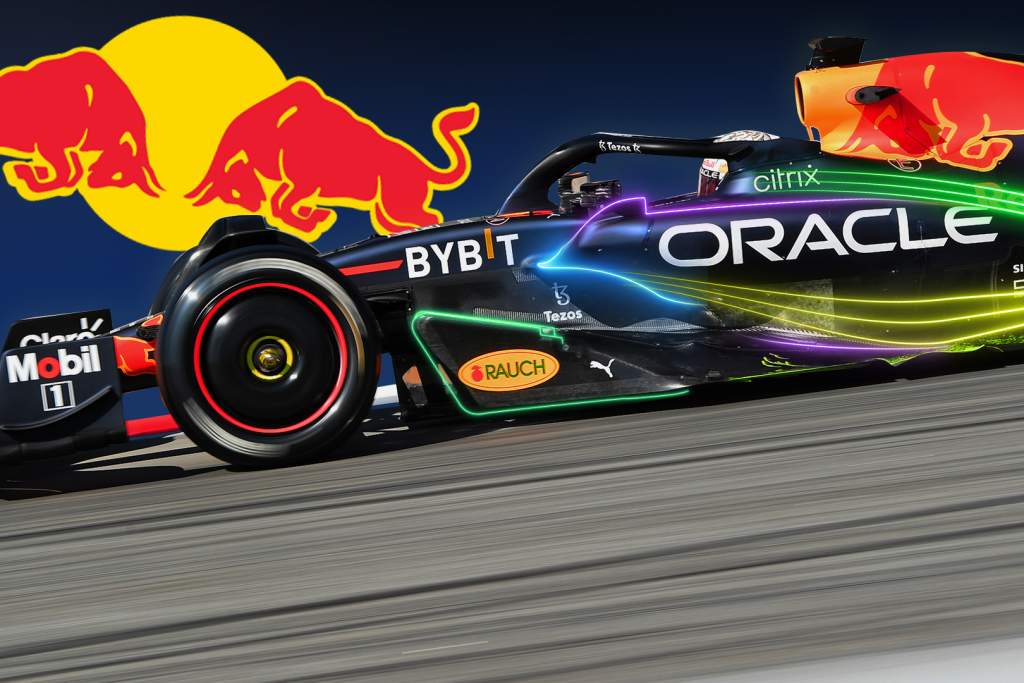Up Next

The Red Bull RB18 is the last of our new-car analysis articles for the season, and I don’t think any of us – teams included – would have predicted as much variation as we’ve seen.
It will be interesting to see if this converges over the season and the extent to which it does so. Some concepts are easily adaptable, some require more commitment but only time will tell who is right and who is wrong and if there is one ideal concept.
The Red Bull has been more eagerly awaited than any other car given everyone has been anxious to see what Adrian Newey would come up with. He and his team at Red Bull certainly haven’t let us down.
We’re not in the position to say if it’s better or worse than the other front running teams, but it sure as hell is different in quite a few areas. The performance level will become clear, but for now, we can only comment on what we see and compare it with the direction others have taken.
NOSE/FRONT WING
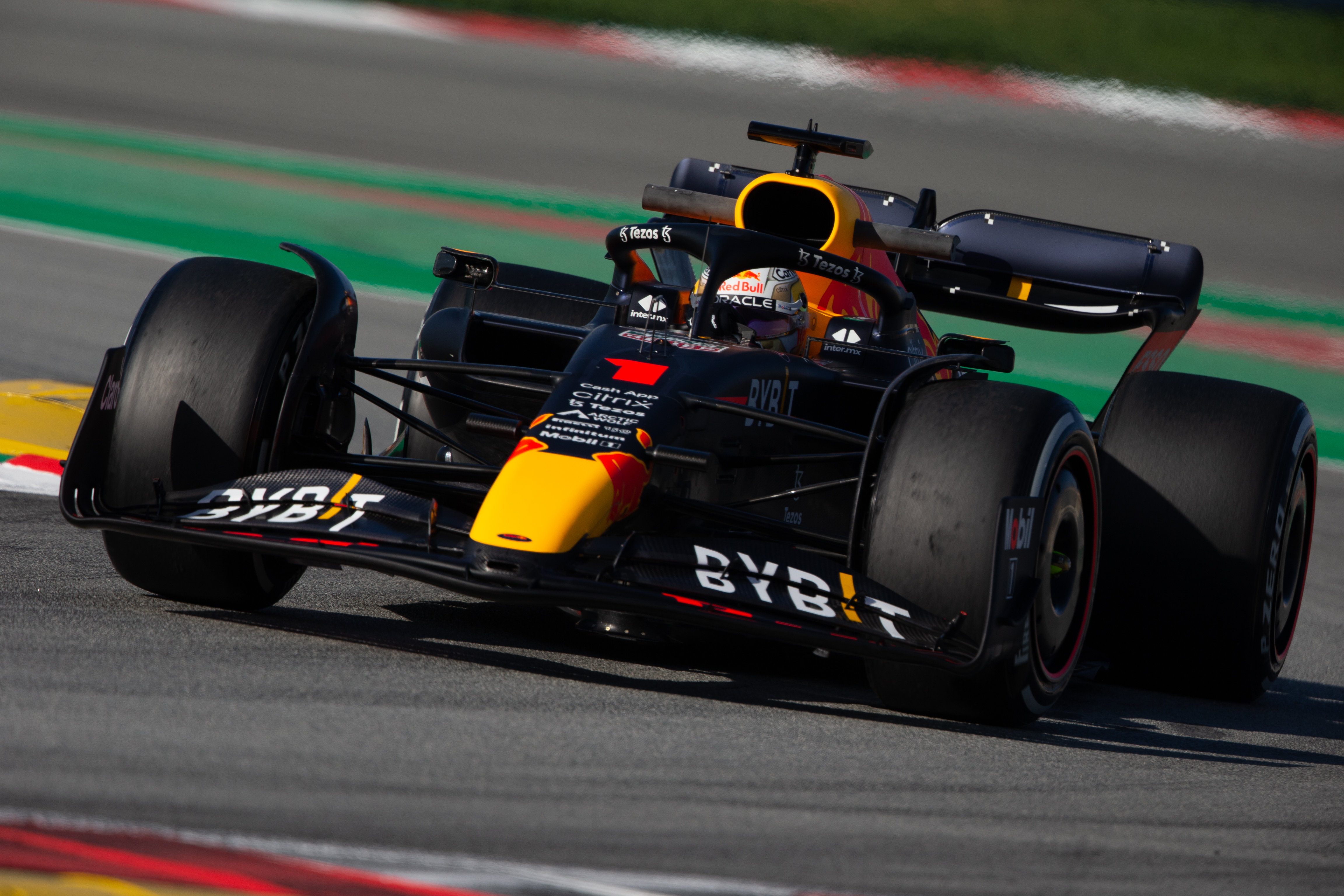
The front wing has the full-length slot gap between the first and second elements that we have seen from many other teams.
The mid-section of the forward element droops slightly and appears to be as low to the ground as is permissible.
There’s not much variation in height across the span in the leading edge profile. The inner section of elements three and four are fastened to the nose with the section of the fourth element adjustable outboard of that.
The flap adjusters are set at a small angle, which will induce a vortex that will spill into the underfloor very similar to what used to be called the Y250 vortex. This vortex should reduce any boundary layer problems that are being generated in the underfloor throat.
The outer section of the front wing elements blend down into the lower edge of the endplates as per the regulations. The endplate itself has a small outward curve as it goes towards the front tyres, which is to encourage some of the airflow to go around the outside of the tyre. The endplates also have the external ski ramp we have seen on other cars.
The nose itself has a fairly flat middle section, but with a quite large corner radius on the upper outer corners to allow the airflow to flow off the upper surface while still staying attached to the nose side surfaces.
FRONT SUSPENSION
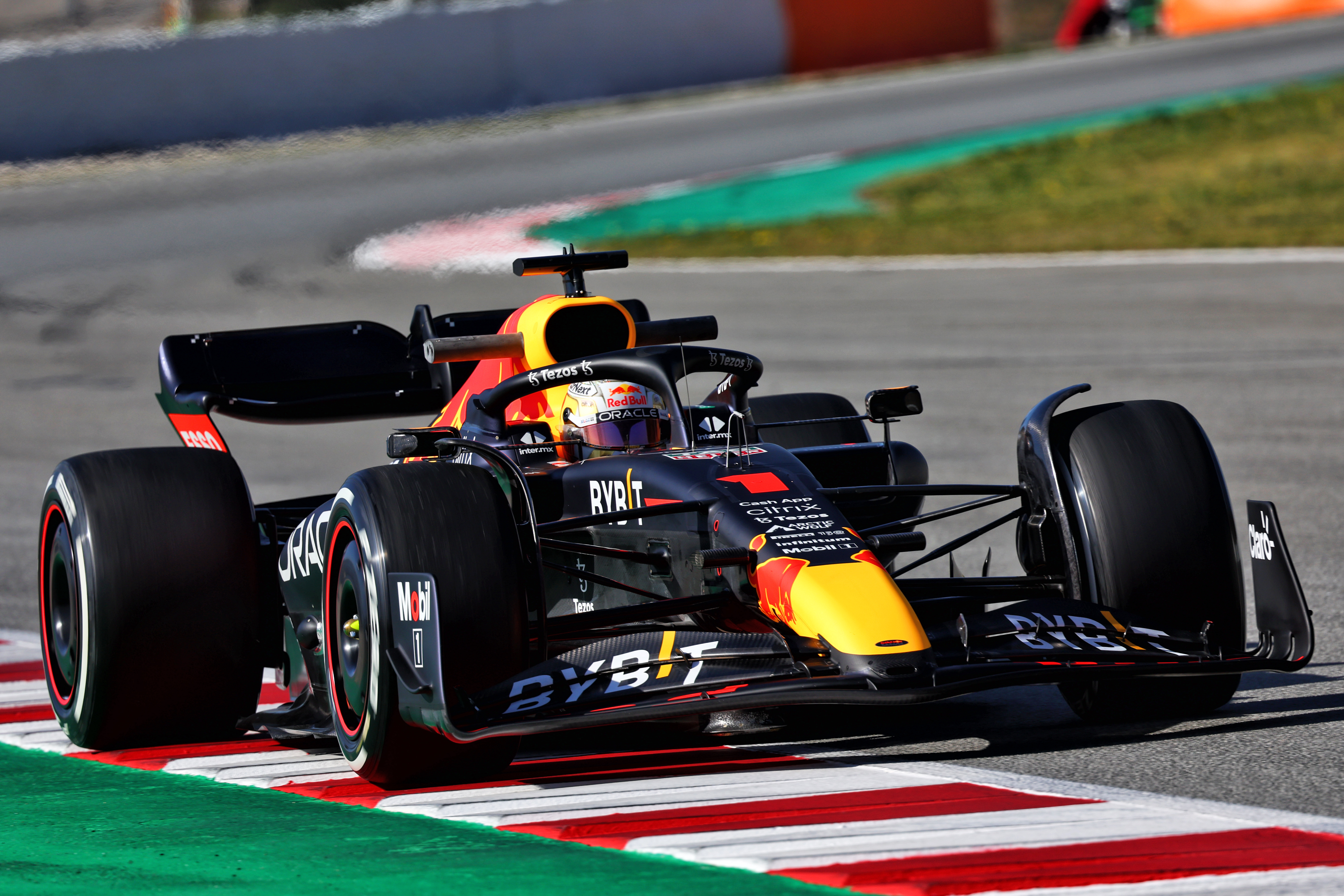
This is where the Red Bull RB18 gets a little bit different and has something in common with the Alfa Romeo C42.
If anything, the angle across the inner mountings of the top front wishbone is more acute than on the Alfa with the rear leg mounting lower. Red Bull also has the steering trackrod mounted ‘nearly’ in line with the lower wishbone.
But where this design differs from Alfa Romeo is it has now adopted pullrod front suspension. So whatever this front suspension concept is trying to achieve, it is not down to how the inboard suspension elements are driven.
As in the case of the Alfa Romeo, this geometry will increase caster as the car builds up speed and compresses towards the ground. But this effectively will be very small so I’m not really sure to what extent you could make that change work for you.
But what I can say is that if this is the golden bullet, it will be very difficult for other teams to incorporate it into their car design.
BRAKE DUCTS
The front brake ducts are quite small, but I won’t get too excited with this until we really see what size is required to manage the temperature of the new-for-2022 larger diameter front brake discs. They also have less holes in them, so brake cooling requires a whole new learning curve.
As with all the others we have seen, the inner wheel fairing flairs seamlessly into the mudguard covering the inner corner of the front tyre.
The Ferrari has a very neat lower section controlling the front tyre squirt, but although I can’t really see what Red Bull has done in this area, I’m pretty sure it will be similar. And if not, it won’t be long before it is similar.
UNDERFLOOR LEADING EDGE
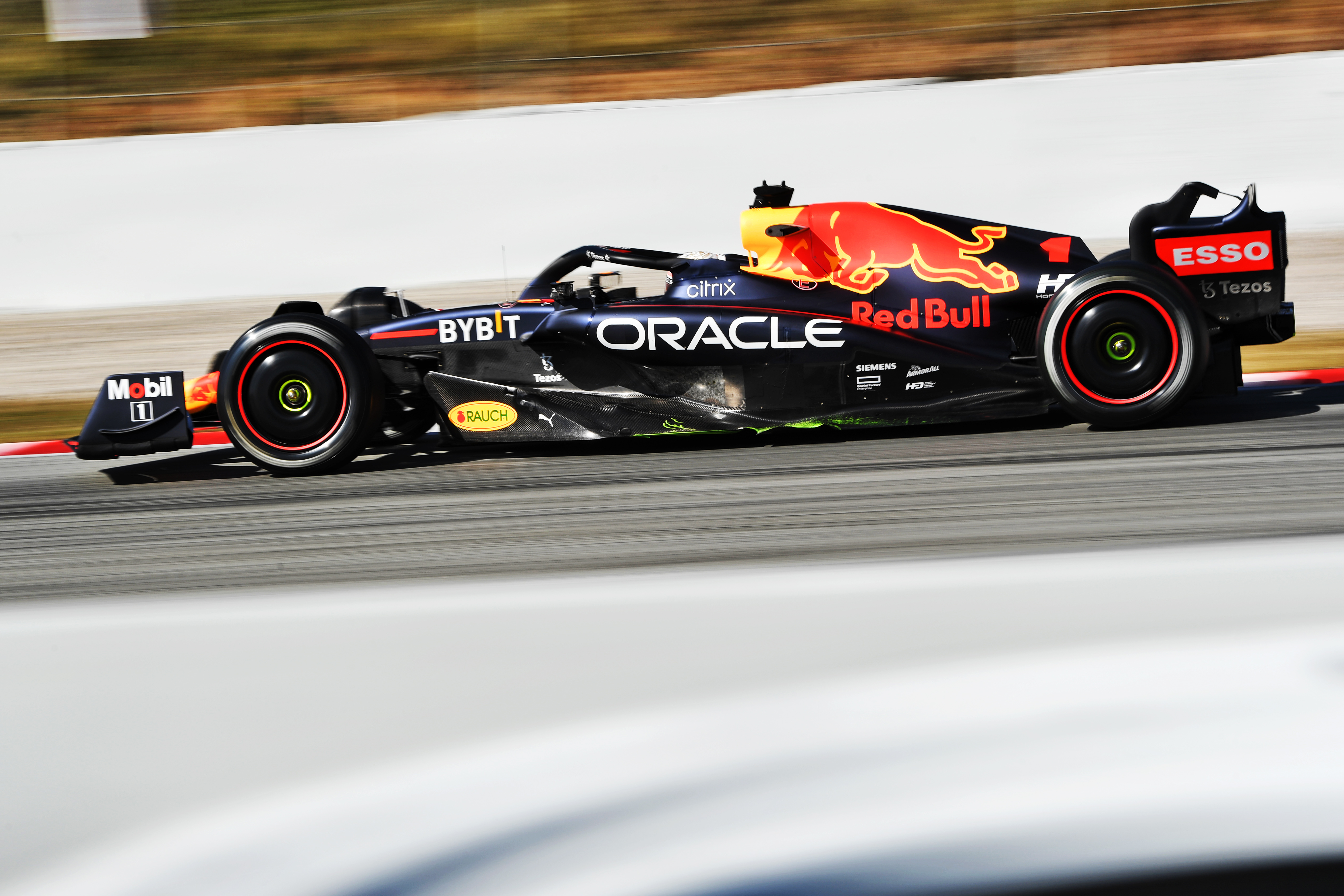
This area is key to the ground effect concept, so it is an area of interest in terms of how the teams have bought into this new regulation and have gone about finding such varied solutions.
The Red Bull probably has a larger front side-pod corner undercut than most others. Its underfloor leading edge is fairly low and like McLaren uniform across its width, however, it has a larger leading edge radius than the McLaren making it less critical to flow direction.
While some teams use four vertical splitters, Red Bull use two of these on the outside starting on the outer lower corner of the floor at a common point and then separating as they go forward.
The outer one will be to manage the turbulent front tyre wake and the inner one, which is not separated by much, is to improve the reasonably decent airflow coming through inside the front tyre and direct it into the underfloor.
I’m pretty sure that inside that dark opening for the underfloor there will be the other two allowable vertical splitters. These will help manage that tunnel entrance flow and turn it to allow the side of the floor to pull some of that flow outwards to improve the function of the diffuser by pulling flow through from nearer the centre of the car.
SIDEPODS/RADIATOR INLET

The radiator inlet is fairly rectangular in shape, with the top more or less as high as it can be.
The wide rectangular shape allows Red Bull the maximum the opening size while minimising the opening height leaving more room for that side pod undercut.
The upper leading edge of the opening is quite a bit rearward of the lower leading edge of the opening which also has a vertical side in line with the lower leading edge opening. This ‘side fin’ goes higher than the top opening, which is allowed as it is used as a rear view mirror mounting. Mercedes has something very similar.
Red Bull has focused on the front sidepod corner undercut. In doing so, it has sacrificed the undercut further back. This is similar to the Ferrari but just that little bit less bulbous.
What it also has is a section on the outside of the floor where the airflow comes over the upper surface of the front corner of the underfloor, this is curved upwards at its trailing edge. Nearly all the teams have something in this area, but it is a little more defined and exaggerated on the Red Bull.
Behind that curved section, the floor gets slightly narrower – similar to last year’s version. This will be to give room for a vortex to form coming off that forward-curved outer floor edge and allow it to act as a sealing device as it goes down the rear part of the edge of the floor.
AIRBOX INTAKE
This is a fairly large entry to feed the turbo and whatever else the Red Bull Powertrains (Honda) PU requires to be cooled up in that area.
It would be great to see one of these cars under its outer skin. Airflow management under the outer skin has become just as important as airflow management over the outer skin, if this can be optimised it simply takes less mass flow to achieve the same cooling.
RADIATOR EXIT
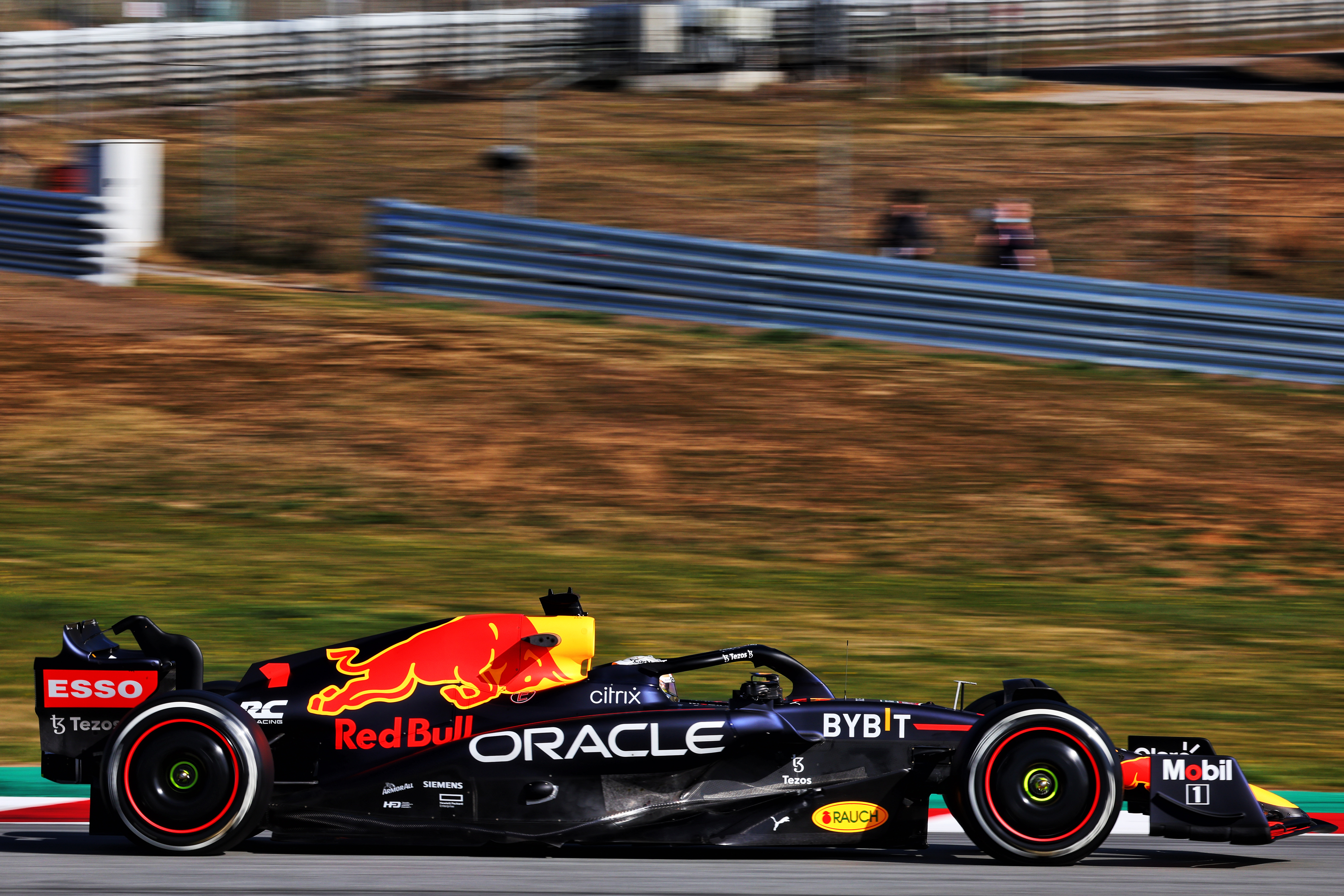
It appears that all of Red Bull’s radiator exit airflow emerges fairly high up at the rear of the sidepods.
This exit in theory, other than small holes to allow the suspension legs to go through, is not allowed to exit in front of the centreline of the rear wheels. Some teams have simply reduced the length of the sidepods, but we will have to wait to see how the FIA views this interpretation of the regulations.
We will probably see some cooling tuning louvre panels further up the body surfaces when we get to hotter countries – in fact, we’ve already begun to see that on the first day of pre-season testing (see below).

COKE BOTTLE AREA
This is not as dramatic as we have seen from Red Bull in the past and not dissimilar to Ferrari’s design.
My theory on this quite abrupt Coke bottle entrance is that by opening it up fairly quickly, it pulls more of the airflow being displaced by the rear tyre inwards.
If all the airflow comes down and around the sidepods filling up the coke bottle area this mass of air in front of the rear tyre will be displaced more outward, meaning that the turning vanes on the inner surface of the rear brake ducts won’t work as efficiently.
REAR SUSPENSION
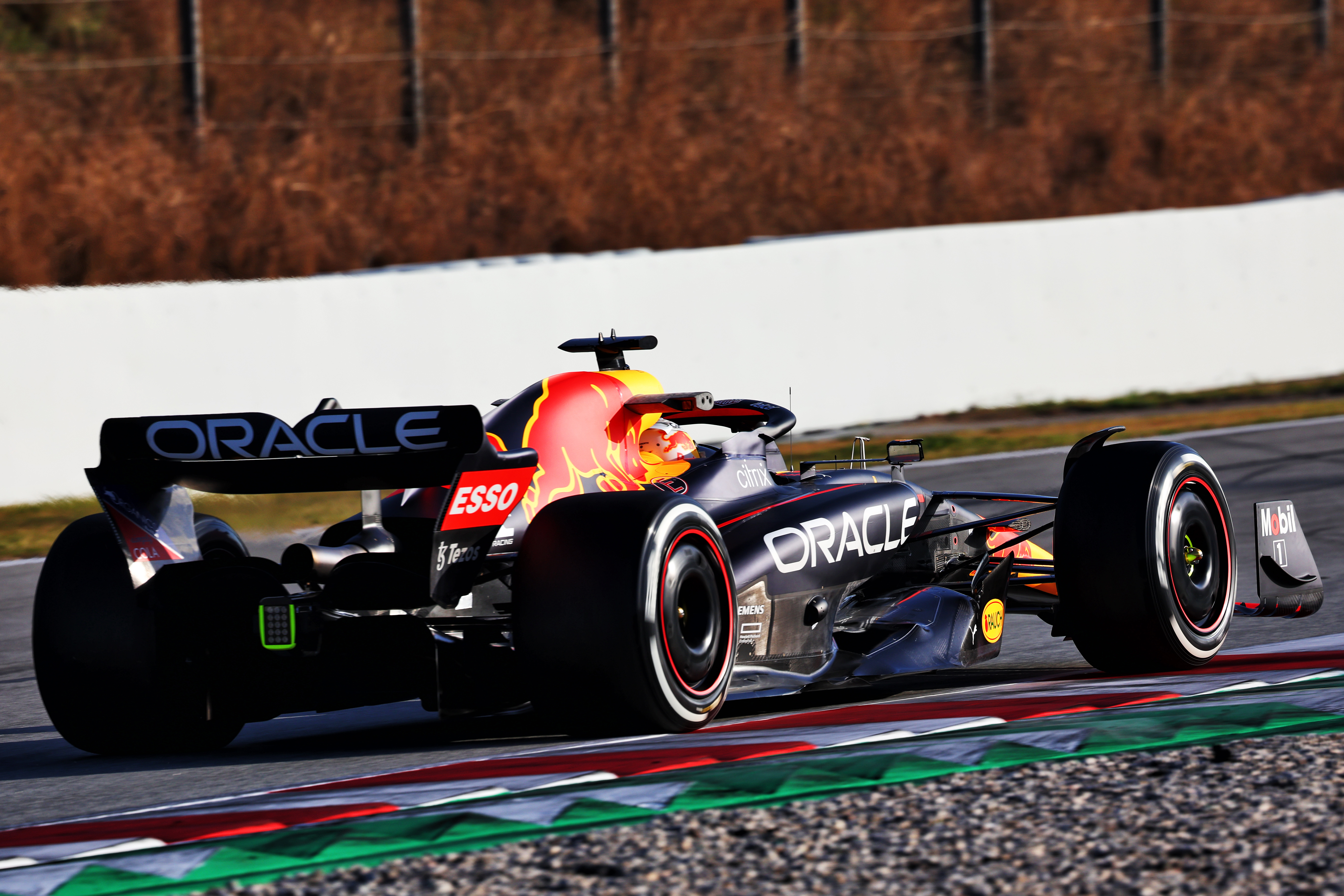
This is a top and bottom wishbone design, but as with McLaren, AlphaTauri and Alfa Romeo, it features pushrod-operated inboard suspension system.
This will be done mainly for packaging reasons. With these cars being slightly shorter by regulation than last year’s cars, it means that the gearbox will be slightly shorter leading to some packaging issues. I’m not a fan of pushrod rear suspension, but it is simply a system that takes an outer wheel movement and transfers that inboard – what it requires is a bigger section as it is working in compression as opposed to tension.
Red Bull has also gone away from the narrow-base lower rear wishbone inner pickups and gone for a fairly simple wide base solution. The forward leg is a reasonable distance above the diffuser’s upper surface, so won’t be critical for blockage through the Coke bottle area.
REAR BRAKE DUCTS
There is not a big requirement for rear brake ducts on these cars as most of the rear braking is done whilst harvesting to charge up the battery pack. So they are mainly a mounting for the turning vanes that are mounted on them to produce load directly on the rear tyre.
That load, therefore, doesn’t have to go through the suspension system so there is no time delay when the car is, for example, moving vertically.
When the rear of the car is moving upwards, it partly unloads the rear tyre contact patch. This makes the rear of the car nervous, which the driver really doesn’t like. Then when the car settles, it loads the rear tyre up again inducing understeer.
The vanes on the rear half of the inner face of the rear brake ducts reduce this offset in tyre load, they also help to seal tithe sides of the narrower diffuser than we had last year.
REAR WING
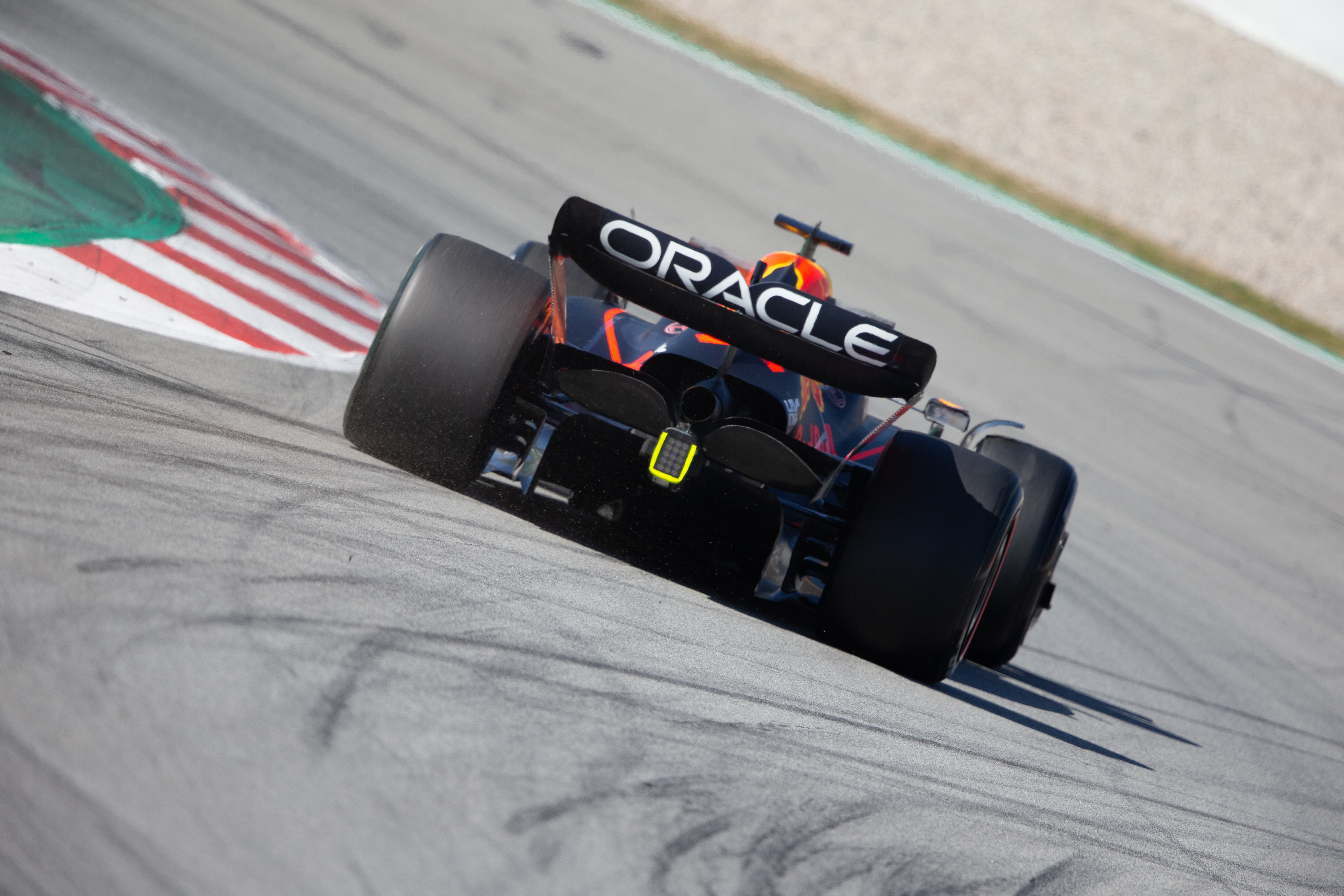
This is on a central single mount, but for the most part, is designed to comply with the overall size requirements and the wing elements to endplate radii rules.
BEAM WING
This is a very different concept from anything else we have seen. You could say it’s well on the way to making this a double diffuser car.
Red Bull has taken the rear beam wing regulations and basically extended the main plane rearwards and upwards to act as a potential flap extension above the diffuser. It has a slot gap between the two components, so will get reasonable airflow through there to keep the flow attached.
This will be classed as the forward element of the beam wing with the rear element which is actually further forward. But it will still help get a turning moment on the mass flow going through this section of the car, helping the diffuser and the upper wing’s performance.
With the front and rear wing, there is a maximum and minimum overhang from one element to another the beam wing doesn’t have that stipulation.
DIFFUSER
There’s nothing really trick here at the exit of the diffuser, as the regulations are fairly prescriptive in this area. Provided you comply with the maximum height and maximum width and the corner fillet rad it’s just about all you can do, inside the diffuser there will be the internal splitters which can have a small tolerance on location and curvature but that’s about it.
It’s the bits around the diffuser that will make it more powerful such as the beam wing and the parts hanging off the sides of the rear brake ducts and Red Bull have really attacked that area.
CONCLUSION
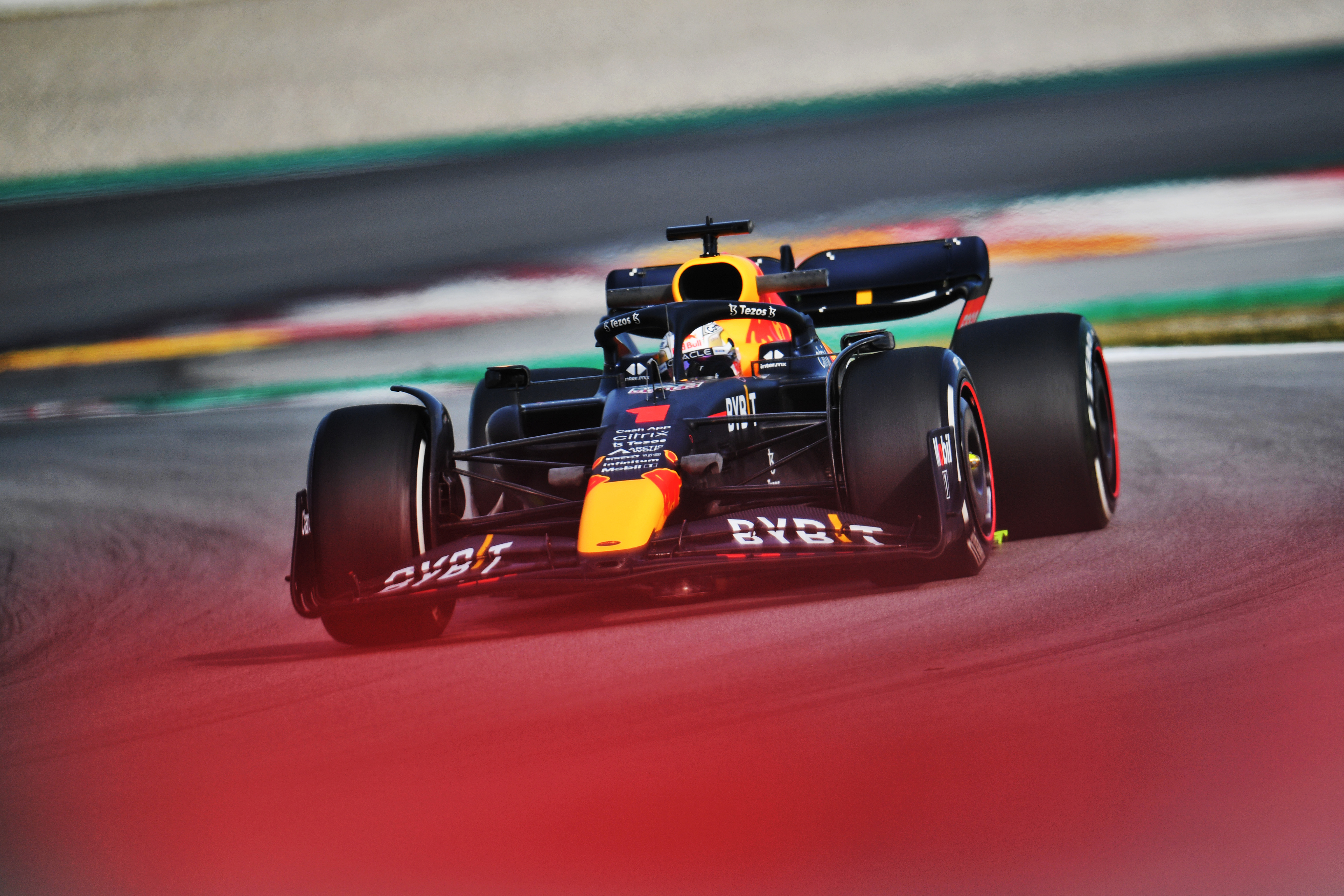
The Red Bull is different in many areas but different doesn’t necessarily mean better.
These cars will all converge to some degree over the next few months, but for now Red Bull has some bits and pieces that might just serve it well and will also be fairly difficult to incorporate onto other cars.
That’s all you can ask for at this part of the season. Now, for everyone, it’s about getting it all to correlate with what was expected. If it doesn’t, teams have to investigate why and try to rectify that problem before digging a bigger hole making things worse by just blindly developing in a random direction.
If, for example, your car is suffering from minor porpoising then improving the peak loads from the underfloor on paper and in the simulator, it will make the car look like it has improved performance, however, on track it will bring inconsistency to its performance and probably spook the driver.


